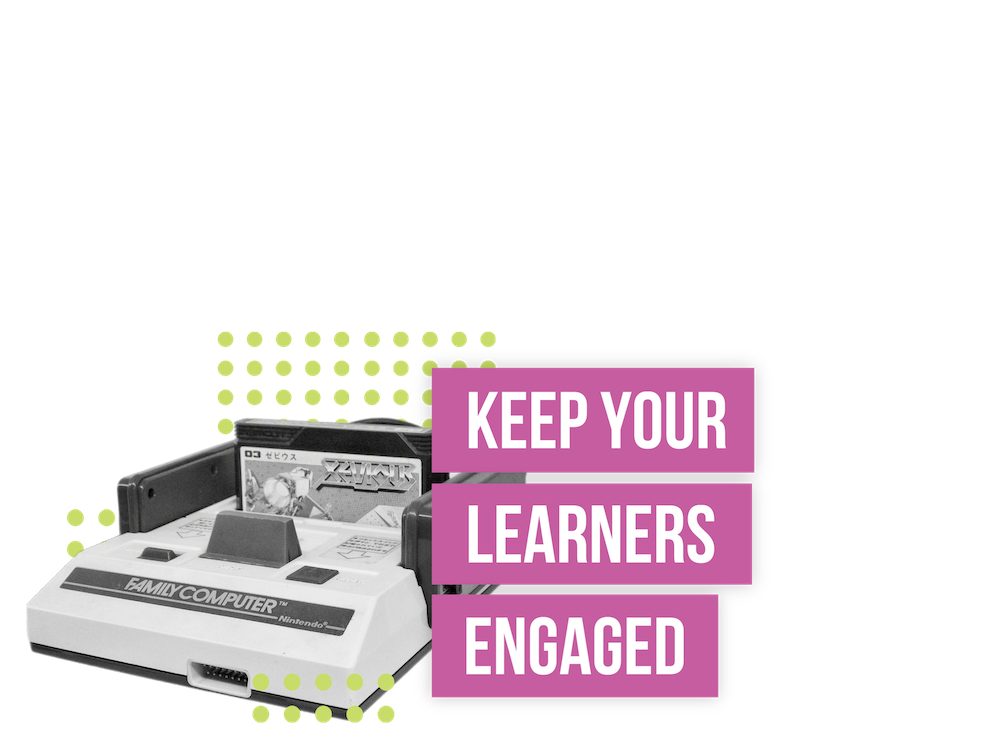
Keeping learners engaged is key to a successful online course. In this section you will read about the areas to focus on that will make your course informative, engaging and enjoyable.
- Bitesize content
- Variety and interactivity
- Meaningfulness
- Building a community
- Less is more
The age of instant information has been decreasing attention spans over the past decades. Being online, learners can get distracted by notifications, advertising, news, emails, and so much more. We have to ensure our learners have their chance of focusing their attention on the learning materials. We should design our course so that it contains lots of smaller, bitesize chunks of information that can be digested in smaller sittings. This will prevent cognitive overload and encourage our learners to come back for more. Besides, learners might also be trying to fit their studies around other personal commitments, trying to grab a spare ten minutes whenever they can, so being able to dip in and out of the course materials and easily pick up where they left off is key for online learning to be successful.
When designing a course, it’s good to think about the different formats that will work best to bring the topic to life. Everyone’s different and has her own needs and preferences when it comes to learning. So, designing a variety of content types into your course will mean that it’s much more likely to appeal to a wider audience.
You might think about including in your course audio clips, podcasts, articles, videos and infographics. And it’s not just about creating your content in different formats. If you want your learners to stay focused, break the content up with short, interactive tasks that allow learners to reflect on and explore the topics being presented, rather than overloading them with information.
Focusing on exploration and curiosity will get your learners hooked. Problem-solving, scenario-based activities, interactive games, and peer discussions will challenge learners and make them feel positively motivated.
When learners find meaning in new information, they connect more deeply with it, and the learning process requires much less effort. Learning can either feel like a chore or enjoyable. If learners are asked to reflect on their own personal experiences and the course materials evoke emotions, they’re much more likely to have a meaningful experience overall.
To do this, you can include real-world examples, stories, and case studies from a range of contexts so that learners can put the learning into their own context, allowing them to connect more deeply with it. Speaking to your learners’ emotions is generally considered to be one of the most effective ways to stimulate engagement.
When designing your course, include lots of opportunities for learners to interact with their peers through activities like discussions, solving group tasks together, and sharing and commenting on each other’s work. The more feedback learners give and receive, the more they will feel inspired and motivated to continue learning. Connecting people in this way through sharing your topic is a fantastic and unique experience which many content authors find just as rewarding as the learners do.
Courses can be developed effectively when you stick to some simple learning design rules. These rules are backed up by extensive research into how people learn effectively online. For example, research suggests that videos that are no longer than five minutes have the highest level of engagement. After the five-minute mark, attention tends to fall away very quickly. That’s about 700 words. Similarly, a learner is much more likely to read a whole article if it’s no longer than around 800 words.
Stick to the guidance as much as possible when you’re developing content. Overproduction can lead to a lot of time being wasted to cut and edit content down to a reasonable amount, which is a painful process. Also, make sure your content is aesthetically pleasing. Low-quality materials such as blurred images and illegible text, make learning a struggle and cause unwelcome distraction, which puts learners off straight away. So, make sure your graphics, images, diagrams, and media are high-quality, clear and relevant.
When creating content, think about the most interesting ways to present information. For example, in a course about sustainable food production, a potentially text-heavy written piece containing lots of facts and statistics about the global production of sugar, could instead be summarised in an infographic, a short animation, or interactive map.